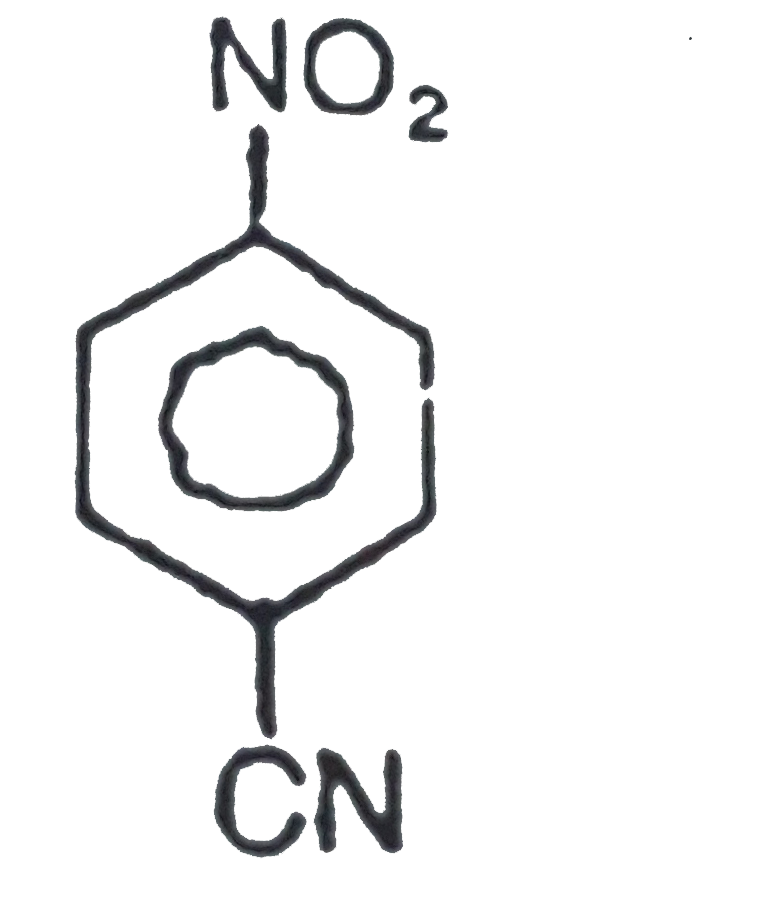Assertion: In monohaloarenes, further electrophilic substitution occurs at ortho and para position
Reason: Halogen atom is a ring deactivator
Assertion and reason both are correct and reason is correct explanation of assertion
Assertion and reason both are wrong statements
Assertion is correct but reason is wrong statement
Assertion and reason both are correct statements but reason is not correct explanation of assertion
The correct Answer is:D
To solve the assertion-reason question, we will analyze both the assertion and the reason step by step.
Step 1: Analyze the Assertion
The assertion states that in monohaloarenes, further electrophilic substitution occurs at the ortho and para positions.
- Explanation: Monohaloarenes are aromatic compounds that contain a halogen substituent (like Cl, Br, I, or F) on a benzene ring. When an electrophile approaches the benzene ring, the halogen can influence where the electrophile will add. The halogen atom, being electronegative, can donate electron density through resonance to the ortho and para positions of the ring. This makes these positions more reactive towards electrophilic substitution.
Step 2: Analyze the Reason
The reason states that the halogen atom is a ring deactivator.
- Explanation: A ring deactivator is a substituent that decreases the electron density in the aromatic ring, making it less reactive towards electrophilic substitution. However, halogens (like Cl, Br, I, and F) are unique because, despite being electronegative, they can donate electron density through resonance. This means that while they do deactivate the ring compared to more activating groups (like -OH or -NH2), they still activate the ortho and para positions relative to the halogen substituent. Therefore, the statement that halogens are ring deactivators is misleading in this context.
Conclusion
- The assertion is correct: Electrophilic substitution does occur at ortho and para positions in monohaloarenes.
- The reason is incorrect: Halogen atoms are not strictly ring deactivators; they are considered ring activators due to their resonance effect.
Final Answer
- Assertion: True
- Reason: False
---
The assertion states that in monohaloarenes, further electrophilic substitution occurs at the ortho and para positions.
The reason states that the halogen atom is a ring deactivator.
- The assertion is correct: Electrophilic substitution does occur at ortho and para positions in monohaloarenes.
- The reason is incorrect: Halogen atoms are not strictly ring deactivators; they are considered ring activators due to their resonance effect.
- Assertion: True
- Reason: False
Topper's Solved these Questions
- HALOALKANES AND HALOARENESBOOK - NCERT EXEMPLAR ENGLISHCHAPTER - HALOALKANES AND HALOARENESEXERCISE - Long Answer Type Questions
3 Videos
- HALOALKANES AND HALOARENESBOOK - NCERT EXEMPLAR ENGLISHCHAPTER - HALOALKANES AND HALOARENESEXERCISE - Match Type Questions
6 Videos
- GENERAL PRINCIPLE AND PROCESSES OF ISOLATION OF ELEMENTS BOOK - NCERT EXEMPLAR ENGLISHCHAPTER - GENERAL PRINCIPLE AND PROCESSES OF ISOLATION OF ELEMENTS EXERCISE - Long Answer Type Questions
1 Videos
- P-BLOCK ELEMENTSBOOK - NCERT EXEMPLAR ENGLISHCHAPTER - P-BLOCK ELEMENTSEXERCISE - Long Answer Type Questions
3 Videos
Similar Questions
Knowledge Check
Assertion: Anisole undergoes eletctrophilic substitution at o−and p−positions.
Reason: Anisole is less reactive than phenol towards electrohphilic substitution reactions.Aif both assertioon and reason are true and reason is the corrct explanation of assertion.BIf both assertion and reason are ture but reason is not the corrcet explanation of assertion.CIf assertion is true but reason is false .Dif both assertion and reason are false.Assertion : Aromatic aldehydes and ketones undergo electrophilic substitution reaction at metaposition.
Reason : Carbonyl group activates the ring towards electrophilic substitution reactions.AIf both assertion and reason are true and reason is the correct explanation of assertion.BIf both assertion and reason are true but reason is not the correct explanation of assertion.CIf assertion is true but reason is false.DIf both assertion and reason are false.Assertion: Aryl halides are highly reactive towards nucleophilic substitution reactions.
Reason: In case of halorenes, halogen atom is attached to sp hybridised carbon atom.AIf both assertion and reason are true and reason Is the correct explanation of assertion.BIf both assertion and reason are true but reason is not the correct explanation of assertion.CIf assetion is true but reason is false.DIf both assertion and reason are false.
In electrophilic substitution reactions of haloarenes, halogen atom is
View SolutionAssertion: Aryl halides undergo nucleophilic substitution reactions with ease.
Reason:The carbon halogen bond in aryl halides has partial double bonds character.
View SolutionExplain the fact that in aryl ethers, (i) the alkoxy group activates the benzene ring towards electrophilic substitution and (ii) it directs the incoming substituents to ortho and para positions in benzene ring.
View SolutionThe most deactivating group for electrophilic substitution reaction in benzene ring is
View SolutionThe general electrophilic substitution reaction (replacement of H. by an electrophilic which is an electron deficient species) in aromatic ring is represented as followed.

An electrophilic attacks on ortho and para positions which respect to a stronger +m group are present in benzene ring and the electrophilie attacks at meta position with respect to stronger -m group if two -m groups are present in benzene ring.
What will be the product when electrophile Br⊕ attacks on
View Solution
